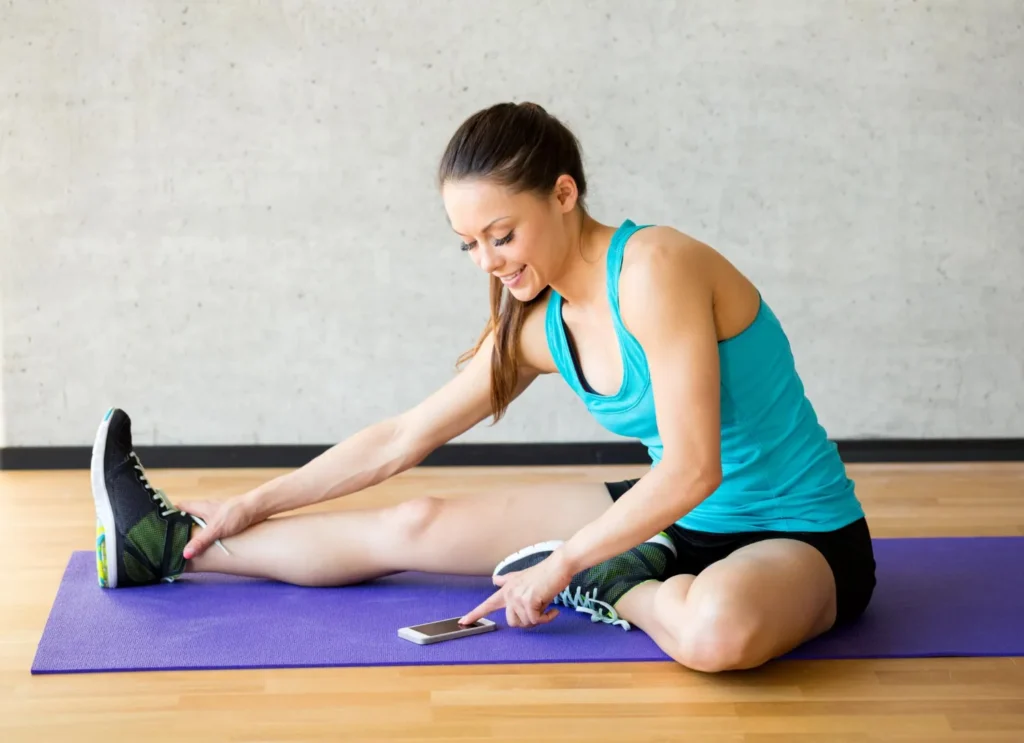Strengthening your ankles is crucial for enhancing overall mobility and stability, especially if you lead an active lifestyle or are recovering from an injury. Our guide to “At Home Proven Exercises to Strengthen Ankles” is meticulously designed to bolster your ankle strength and flexibility, offering a solid foundation for injury prevention and improved performance.
Whether you’re an athlete, a weekend warrior, or simply looking to maintain optimal joint health as you age, these exercises can be seamlessly integrated into your daily routine. From basic stretches to more advanced strength-building moves, each exercise is aimed at fortifying the muscles and ligaments around your ankle, enhancing balance, and ensuring a more excellent range of motion.
Join us at Innovative Therapy P.C. as we explore a variety of exercises that target the core components of ankle strength: mobility, stability, and flexibility. From simple stretches to balance-enhancing movements, we will help you build a foundation of solid and healthy ankles that support your active lifestyle.
How Your Ankles Work?

Understanding the Basic Anatomy
Your ankle isn’t just a simple joint; it’s a complex system of bones, muscles, and ligaments. Three prominent bones— the tibia, fibula, and talus—interlock to form the ankle. Surrounding them are ligaments and muscles that support movements and bear your body’s weight.
Function and Importance
Why is this intricate structure so crucial? The ankle bears up to five times your body weight during walking and much more during running or jumping. This ability makes it essential for stability, mobility, and balance. It’s the linchpin in body mechanics, aiding in smooth and efficient movement.
Common Ankle Issues
Yet, the ankle is prone to troubles. Sprains top the list, caused often by twisting movements. Over time, or with wear and tear, instability can creep in, complicating your daily movements. Aging impacts ankle health, too, often reducing flexibility and cushioning.
Identifying Weak Ankles
Several signs can indicate weak ankles. These include:
- A history of ankle sprains or instability
- Difficulty balancing on one leg
- Rolling your ankles inwards or outwards frequently
- Pain or discomfort in the ankle joint
- Reduced range of motion in the ankle
If you experience any of these symptoms, it’s essential to consult a healthcare professional at Innovative Therapy P.C. for proper diagnosis and guidance.
Why Strong and Flexible Ankles Matters?
Solid and flexible ankles are not just about performance. They’re essential to everyday mobility and balance. Think about it. Each step requires your ankles to adapt to changes in terrain and support. This adaptability prevents falls and injuries, especially as we age.
- Injury Prevention: Strong ankles can significantly reduce the risk of sprains, strains, and other injuries. The stronger the muscles and ligaments supporting the joint, the better equipped they are to handle sudden movements and impacts.
- Improved Balance and Stability: Strong ankles enhance your ability to maintain balance during various activities, reducing the risk of falls and slips.
- Enhanced Athletic Performance: Powerful ankle muscles provide better propulsion during activities like running, jumping, and cutting.
- Reduced Pain: Weak ankles can contribute to pain in the feet, knees, and even the lower back. Strengthening the ankles can alleviate pain and improve overall body mechanics.
- Better Proprioception: Proprioception refers to your body’s awareness of its position in space. Strong ankles contribute to improved proprioception, allowing for better control and coordination during movement.
Pre-Workout Preparations for Exercises To Strengthen Ankles
Before you dive into ankle exercises, preparation is critical. Let’s talk about how to set the stage for a safe, effective workout. First up, stretching. It’s crucial. Stretching wakes up your muscles and ligaments. It prepares them for activity and prevents injury. Spend a few minutes on this. Your ankles will thank you later. Next, warm-ups. Take advantage of these. Simple moves like passive dorsiflexion or plantarflexion are great. They increase blood flow and flexibility in your ankles. This step is crucial if you’ve been sedentary for a while.
Comprehensive Guide to Ankle Strengthening Exercises
This guide provides a variety of exercises targeting different aspects of ankle health: range of motion, strength, balance, and proprioception. Aim for 2-3 sets of 10-15 repetitions for each exercise, resting for 30 seconds between sets. You can perform this routine 2-3 times per week, gradually increasing the difficulty as you get stronger.
Range of Motion Exercises
Increase Ankle Mobility with These Range of Motion Exercises These exercises help improve the flexibility and range of motion in your ankles.
Ankle circles:
- Sit on a chair with your feet flat on the floor.
- Slowly rotate your foot in a circular motion, tracing clockwise and counter-clockwise circles for 10 repetitions in each direction.
- Focus on maintaining a smooth, controlled movement throughout the range of motion.
Ankle alphabet draws: Imagine writing the alphabet in the air with your toes. While seated, slowly trace each letter of the alphabet in the air with your big toe, focusing on control and maintaining a full range of motion.
Strength Building Exercises
Build Ankle Strength: Step-by-Step Guide to Key Exercises
These exercises target the muscles surrounding the ankle joint, enhancing strength and stability.
Towel curls:
- Sit on a chair and place a towel under the ball of your foot.
- Use your toes to scrunch the towel towards you, crumpling it as much as possible.
- Hold for a second, then slowly release the towel back to its flat position.
- Repeat 10-12 times per foot.
Calf raises:
- Stand on a step or curb with your heels hanging off the edge.
- Slowly raise your body onto your toes, squeezing your calf muscles at the top.
- Hold for a second, then lower your heels back down to the starting position in a controlled manner.
- Perform 2-3 sets of 10-15 repetitions.
Single leg calf stretch: This variation increases the challenge of your balance and core stability. Stand on one leg with the other leg slightly bent behind you for balance. Raise your body onto the ball of your standing foot, then lower back down slowly. Perform 10-12 repetitions per leg.
Balance and Proprioception Exercises

These exercises challenge your balance system and improve your body’s awareness of joint position.
Single leg stance:
- Stand on one leg for as long as you can, holding onto a wall or chair for support if needed.
- Aim for 30 seconds to 1 minute per leg.
- As you progress, try closing your eyes for an added challenge (perform with caution to avoid falls).
Balance wobble board: If you have access to a wobble board, standing on it for short periods (gradually increasing the duration) is an excellent way to challenge your balance and proprioception in the ankles.
Heel-toe walking: Walk in a straight line, placing your heel directly in front of your toes with each step. This exercise challenges your balance and coordination.
Functional Exercises
Functional Ankle Exercises for Everyday Strength and Stability
These exercises mimic everyday movements and help translate your newfound ankle strength and stability into real-world activities.
Lateral lunges:
- Stand with your feet hip-width apart.
- Step out to the side with one leg, lowering your hips towards the ground.
- Push through your heel to return to the starting position.
- Repeat on the other side.
- Perform 2-3 sets of 10-12 repetitions per leg.
Stair step-downs:
- Slowly step down off a curb or step, focusing on controlling the descent with your ankle and calf muscles.
- Hold onto a railing for support if needed.
- Perform 10-12 repetitions on each leg.
Coordination And Agility Exercises
These exercises focus on improving your coordination and agility while enhancing your body’s proprioception and spatial awareness.
Ladder Drills: Set up a ladder on the ground and perform various footwork patterns. This enhances coordination, agility, and spatial awareness.
Cone Dribbling involves Arranging cones in a pattern and navigating through them using precise foot movements. This exercise promotes agility and improves ankle coordination.
Integrating Ankle-Strengthening Exercises into Your Routine
Incorporating ankle rehabilitation exercises into your daily routine doesn’t have to be a daunting task. The key is to seamlessly blend these exercises into your existing lifestyle to ensure consistency and avoid overwhelming your schedule.
Practical Tips for Incorporation
Set Reminders: Use smartphone apps or sticky notes as reminders to perform your exercises at specific times of the day, such as in the morning after waking up or during a mid-afternoon break.
- Link to Daily Activities: Tie your exercises to daily activities. For example, perform ankle circles while brushing your teeth or balance exercises while waiting for your coffee to brew.
- Use Commercial Breaks: If you spend evenings watching T.V., use commercial breaks as a cue to stand up and perform a few exercises.
- Involve Family and Friends: Performing exercise as a group activity can increase motivation and accountability. Encourage family members to join in or share your progress with friends.
Maintaining Consistency and Motivation
Track Your Exercises: Keep a journal of your exercises, noting down what you do and when. Seeing your progress in writing can be a powerful motivator.
- Set Small Goals: Break your larger goals into smaller, achievable milestones. Celebrate these small victories to keep your spirit high.
- Vary Your Routine: Keep your exercise routine interesting by varying the exercises. This not only prevents boredom but can also challenge different muscles and improve overall ankle strength.
- Tracking Your Recovery: Making Smart Adjustments for Better Results
To effectively rehabilitate your ankle, it’s crucial to monitor your progress and make adjustments as needed. This ensures that the exercises remain both challenging and beneficial throughout your recovery journey.
How to Monitor Progress
Note Changes in Pain and Flexibility: Regularly assess any changes in the level of pain and the flexibility of your ankle. Improvements in these areas can indicate effective rehabilitation.
- Use a Pain Scale: When performing exercises, keep track of pain levels on a scale of 1 to 10. A decrease over time can indicate progress.
- Consult with Professionals: Regular check-ins with a physical therapist or healthcare provider can provide professional insights into your progress.
Adjusting Exercises Based on Recovery and Progress:
- Increase Intensity Gradually: As your strength and flexibility improve, gradually increase the Intensity or duration of your exercises to continue making gains.
- Adapt Exercises to Current Ability: If specific movements still cause discomfort, modify them to make them more comfortable or switch to other exercises that target the same muscles without causing pain.
- Listen to Your Body: Always listen to your body and adjust your exercises to avoid overexertion, which can lead to setbacks in your recovery.
Top Benefits of Ankle Exercises: Beyond Injury Prevention

Ankle strengthening exercises offer a range of advantages that extend beyond just preventing injuries. Here are some additional benefits:
- Improved Overall Fitness: Strong ankles contribute to a more efficient and powerful stride, leading to better overall fitness performance.
- Enhanced Flexibility: Regular ankle exercises can improve your range of motion, allowing for greater flexibility and ease of movement.
- Reduced Risk of Osteoarthritis: Maintaining solid and flexible ankles can help reduce the risk of developing osteoarthritis in the ankle joint later in life.
- Improved Postural Alignment: Weak ankles can contribute to poor posture. Strengthening these muscles can help improve your overall postural alignment.
- Increased Confidence in Movement: Strong, stable ankles allow you to move with confidence and participate in activities you enjoy without fear of injury.
What Are The Risks Of Tightened Or Weakened Ankles?
Ankle health plays a crucial role in overall mobility and stability. Ankles that are either too tight or too weak can lead to a variety of problems and limitations. Let’s explore the potential risks associated with both conditions:
Risks of Tight Ankles:
- Reduced Range of Motion: Tightness in the muscles and tendons surrounding the ankle joint can restrict your range of motion. This can limit your ability to perform activities that require full ankle flexion and extension, such as squatting, jumping, and lunging.
- Increased Risk of Injury: Limited ankle mobility can make your joints more susceptible to sprains and strains. Tight muscles and tendons are less adaptable to sudden movements, putting you at a higher risk of injury during exercise or daily activities.
- Balance Issues: Tight ankles can affect your proprioception the body’s awareness of joint position. This can lead to balance problems and an increased risk of falls.
- Pain and Discomfort: Chronic tightness in the ankle muscles can cause pain and discomfort, especially during activities that involve repetitive ankle movement.
Risks of Weak Ankles:
- Sprains and Instability: Weak ankles are more prone to sprains, which occur when the ligaments supporting the joint overstretch or tear. Sprains can be incredibly painful and can take weeks or even months to heal completely.
- Poor Balance and Coordination: Weak ankle muscles can impair your balance and coordination, making you more likely to stumble or fall. This can be particularly dangerous for older adults or those with pre-existing balance issues.
- Increased Pain in Other Joints: Weak ankles can put additional stress on your knees, hips, and lower back as they try to compensate for the instability in the ankle joint. This can lead to pain and discomfort in these areas.
- Reduced Athletic Performance: Weak ankles can hinder your performance in activities that require agility, stability, and power. Running, jumping, and cutting movements become more challenging and less efficient with weak ankles.
When to Seek Professional Help
While many ankle rehabilitation exercises can be effectively performed on your own, seeking professional guidance from Innovative Therapy P.C. can be crucial to ensure safety and effectiveness throughout your rehabilitation process.
Signs that Professional Guidance is Needed:
- Persistent Pain: If pain does not decrease with regular exercises or worsens, it’s a clear sign to consult a professional. Continuing to exercise in pain can lead to further injury.
- Limited Progress: If there’s little or no improvement in your flexibility or strength after several weeks, it might indicate underlying issues that require professional insight.
- New or Worsening Symptoms: Any new symptoms, such as increased swelling or instability in the ankle, should be promptly assessed by a professional to prevent complications.
How Professionals at Innovative Therapy P.C. Can Aid in the Rehabilitation Process:
- Tailored Exercise Plans: Our therapists at Innovative Therapy P.C., located at 13747 Montfort Rd. Suite 160 Dallas, TX 75240, specializes in developing personalized exercise plans that address your specific needs, significantly enhancing the effectiveness of your rehabilitation.
- Advanced Techniques: We introduce advanced techniques, including manual therapy and equipment-assisted exercises, which are designed to maximize your recovery potential. These techniques are not typically feasible to perform at home and require expert supervision.
- Preventing Further Injury: Our skilled therapists will ensure you are performing exercises correctly and safely. Learning the proper techniques is crucial in preventing further injury and facilitating a faster recovery.
If you’re experiencing any of the above signs or simply want to ensure your ankle rehab is on the right track, don’t hesitate to reach out. Contact us at Innovative Therapy P.C. to schedule an appointment. Let us help you regain your strength and mobility, setting your Conclusion.
Throughout this article, we’ve explored the significant benefits of ankle rehab exercises and provided detailed guidance on how to strengthen your ankles effectively. From integrating simple exercises into your daily routine to understanding when it’s necessary to seek professional help, we’ve covered essential strategies to enhance ankle stability, flexibility, and overall health.
Suppose you’re looking to further your understanding or need specific help, visit a professional like those at Innovative Therapy P.C., located at 13747 Montfort Rd. Suite 160 Dallas, TX 75240, can provide personalized guidance and advanced therapeutic techniques. Take the first step towards a stronger, more resilient future by prioritizing your ankle health today.
FAQs on Exercises To Strengthen Ankles
What are the best exercises for ankle rehabilitation?
Ankle circles, towel stretch, and calf raises are great starting exercises to enhance flexibility and build strength.
How often should I perform ankle rehab exercises?
Aim for daily sessions, especially in the initial stages of rehabilitation, to maintain mobility and strengthen the muscles around the ankle.
Can ankle exercises prevent future injuries?
Yes, strengthening and increasing the flexibility of your ankle can significantly reduce the risk of future injuries by improving stability and balance.
When will I see improvement from ankle rehab exercises?
While individual results vary, many people notice improvements in strength and flexibility within a few weeks of consistent practice.
Are ankle rehab exercises painful?
You may experience mild discomfort, but pain should not be severe. If you experience pain, consult a professional to adjust your exercise regimen.
What should I do if my symptoms worsen after starting an exercise program?
Stop the exercises and consult a healthcare provider or a physical therapist to ensure you are not aggravating your condition.
Is professional help necessary for ankle rehabilitation?
While basic exercises can be done at home, professional guidance from places like Innovative Therapy P.C. is advisable, especially if you have severe pain or limited progress.
How long does ankle rehab typically take?
The duration of rehabilitation can vary based on the severity of the injury and individual healing rates, ranging from a few weeks to several months.
Can I do ankle rehab exercises at home?
Many simple exercises can be done at home; however, for more specialized or tailored exercise routines, consulting with a therapist is recommended.
What are the signs that I should increase the Intensity of my exercises?
If the exercises become too easy and you no longer feel challenged, it may be time to increase the Intensity under professional supervision to continue making progress.





